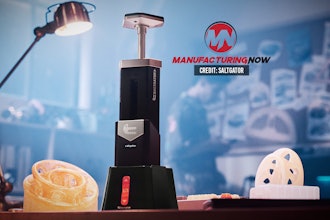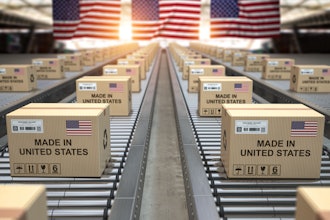Everything is digital these days, including sales charts, production records, patents and more. That means that there is no industry without a trail of electronic data that could potentially become evidence if litigation were to arise – including the food manufacturing industry.
In 2017, nearly 150 class action lawsuits were filed nationwide in the food industry, according to a yearly review from Perkins Coie. And electronically stored information (ESI) is involved in nearly every case.
The process of collecting, filtering, reviewing and producing data is called electronic discovery, or eDiscovery, and it’s increasingly being used in cases involving sensitive data, such as emails, documents and even text messages. While eDiscovery has become a well-established industry over the years, many still view it as a reactionary measure — an ad hoc response to a litigation alarm being sounded that leads to increased stress, chaos and risk. Instead, eDiscovery can and should be treated as a regular business practice. Set some basic guidelines and your company will be ready for litigation if needed without starting from the drawing board every time that alarm sounds.
Here’s how to create a standard eDiscovery process:
1. Outline a Step-by-Step Plan
To standardize any process, there needs to be a clear and detailed guide that individuals can follow. Think of it like a playbook that a sports team uses to guide their gameday course of action. Make sure the plan covers all the details, such as how and where data is stored within the organization, who oversees targeted data collections and review and what procedures to follow when eDiscovery is needed.
And just like a sports playbook, there needs to be room for variations in the plan. For example, sometimes the review process can involve millions of documents, and your current staff may not be able to meet the demand. In that situation, an outside review team may be necessary to get the work done on time, and the plan should identify that threshold.
Additionally, the plan should address when to use certain technologies, such as Technology Assisted Review (TAR) options, which might be useful to quickly classify documents during review. The review team needs to know when to use it — and when not to, as the technology is not as effective on certain data like spreadsheets and graphs.
The final plan will help your eDiscovery team follow the same steps each time they go through the process to get the job done most efficiently.
2. Use a Comprehensive Platform
Another important step in standardizing the eDiscovery process — whether it is handled in-house or through an outside vendor — is to use as few platforms as possible, and to make sure that your platforms all work together seamlessly. For example, you may want to use one platform to manage legal holds, preserve data, make targeted collections, cull data and more. And then the processed, culled-down data set may be moved to a second platform for final review. That is a much better option than using a different platform for each individual task throughout the process, which only adds time and stress to an already time-sensitive situation. Make the process a little easier, keep costs down and ensure greater data security by choosing 1-2 comprehensive platforms that can handle multiple pieces of the process rather than having data living in different silos.
3. Recycling Data & Work Product
Recycling refers to re-using data that has been previously collected and organized. Another reason behind having minimal platforms for the process is that it also can enable you to have one central storage location for all relevant data. Why waste time collecting and reviewing the same data over and over when that work has already been completed for a previous case? Reusing attorney work product when applicable will save both time and money, and it will ensure review efforts are standard throughout all cases.
4. Ongoing Efforts
Once a complete process for data management and eDiscovery has been established, it can make sense to periodically organize and archive new data as it is created. Then it will be ready for any future litigation needs versus starting from scratch should litigation arise.
Plus, when a company is gathering data on an ongoing basis, it can mine it for insight on the business — namely, patterns and trends that appear in the data. Known as business intelligence, companies can use this information to make targeted changes to business practices that will reconcile weaknesses, take advantage of strengths and increase efficiency in business processes overall.
It may just save the company time and money in the case of a litigation as well.
With a rise in litigation in the food manufacturing industry and the continued digitization of documents and records, IT professionals in the industry must stop treating data collection and eDiscovery as a last-ditch effort. eDiscovery is becoming a regular part of litigation processes, so managing data needs to be part of every company’s processes. With an action plan in place and standard procedures set, food manufacturing companies can be ready to handle litigation needs correctly and effectively every time.
Brian Schrader, Esq., is President & CEO of BIA (www.biaprotect.com), a leader in reliable, innovative and cost-effective eDiscovery services. With early career experience in information management, computer technology and the law, Brian co-founded BIA in 2002 and has since developed the firm’s reputation as an industry pioneer and a trusted partner for corporations and law firms around the world. He can be reached at [email protected].






















